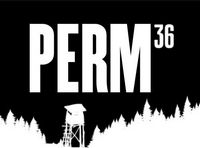The definition “crimes against the state” in the first criminal code of the RSFSR of 122 included “counter-revolutionary crimes” and “crimes against the state order”. Starting with the RSFSR criminal code of 1926, and also the criminal codes of all Soviet republics, the section of counter-revolutionary crimes was constantly expanded with new articles. This continued until the Law of the USSR was passed in December 1958 “On criminal liability for crimes against the state”, which listed a total of 14 crimes from treason to counter-revolutionary sabotage.
In 1948, preparing for a drastic escalation in international tension as the USSR blockaded West Berlin, Stalin ordered to single out prisoners who were particularly dangerous, as disturbances in camps increased. This category of prisoners was transferred to the so-called Special Camps with maximum security and special guards. Prisoners in these camps were used for the hardest menial tasks and wore white rectangular patches on their hats, coats and on the right knee of their pants.

Prisoners of special camps (film still)
The USSR law “On criminal liability for state crimes” of 1958 introduced the definition of “Particularly dangerous crimes against the state” into official jurisprudence. It included ten articles: “Treason”, “Espionage”, “Terrorist act”, “Terrorist act against representative of foreign nation”, “Diversion”, “Sabotage”, “Anti-Soviet agitation and propaganda”, “War propaganda”, “Organized activity directed towards committing particularly dangerous crimes against the state, and participation in an anti-Soviet organization” and “Particularly dangerous crimes against the state committed against another nation of workers”. In the early 1960s, all of these articles were included in the new criminal codes of all the Soviet republics.

Prisoner of special camp No. 4 “Steppe”, author of the book “The Gulag Archipelago” Alexander Solzhenitsyn. Staged photo

Law of the USSR “On criminal liability for crimes against the state”, 1958
In the early 1960s, all prisoners sentenced on charges of particularly dangerous crimes against the state were gathered together in one place – the Mordovian Camps, where they were held in special zones separately from prisoners sentenced for other crimes. Later, this containment in separate camps was given a legislative basis.
The largest groups of particularly dangerous criminals in the early 1960s were sentenced on charges of anti-Soviet propaganda. The 20th congress and the small amount of truth about Stalin and the GULAG in Khrushchev’s speech gave rise to unjustified hopes for freedom of expression, as a result of which in 1957-1959 over 400,000 people were sentenced on these charges – including so-called “nationalists” sentenced on charges of fighting for post-war national liberation, primarily in Western Ukraine and Lithuania. The third largest group were collaborators – primarily village and town police officers who worked under the Nazi occupation.



